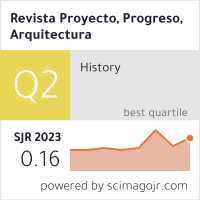SOBRE LA CONDICIÓN URBANA Y SOCIAL DE LAS INFRAESTRUCTURAS / On the urban and social condition of the infrastructures
DOI:
https://doi.org/10.12795/ppa.2015.i13.11Palavras-chave:
nfraestructura, movilidad, estructura urbana, Aalto, Smithson / Infrastructure, mobility, urban structure,Resumo
RESUMEN La arquitectura del siglo XX, con sus teorías, sus propuestas, proyectos y realidades, ha sido la que nos ha enseñado a observar con renovado interés las infraestructuras y a considerarlas como una forma de pensar nuestra disciplina. En cada nueva situación la arquitectura ha señalado y diseñado los lugares de las infraestructuras; se ha modificado el contexto y se han vuelto a generar nuevas situaciones. Se incide directamente en la organización de las estructuras urbanas y territoriales, en la movilidad interior de las ciudades y sobre todo, en la manera que las personas acaban relacionándose. Aalto nos ofrece un claro ejemplo a través de dos infraestructuras aparentemente idénticas con resultados muy diferentes; un punto de vista desde el que pueden observarse otras propuestas de infraestructuras urbanas surgidas a partir de la segunda mitad del siglo XX, o las nuevas tendencias de movilidad del espacio en un mundo globalizado con menor presencia colectiva y social frente al carácter individual de cada persona.
SUMMARY 20th century architecture, with its theories, its proposals, projects and realities have taught us to look at infrastructure with renewed interest and to consider them as another form in which to think about architecture. In each new situation architecture has pointed to and designed the locations for the infrastructures; the context has been modified and new situations have been generated. It is possible to extract from them their social component with a direct impact on the organisation of the urban and territorial structures, in the interior mobility of the city and above all, in the way that people relate to each other. Aalto offers us a clear example through two apparently identical structures with very different results; a point of view from which other proposals of urban infrastructures can be observed and which have emerged in the second half of the 20th century, or new trends of space mobility in a globalised world with a greater collective and social presence facing the individual character of each person.
Downloads
Publicado
Como Citar
Edição
Seção
Licença
Las ediciones impresa y electrónica de esta Revista son editadas por el Secretariado de Publicaciones de la Universidad de Sevilla, siendo necesario citar la procedencia en cualquier reproducción parcial o total.
Salvo indicación contraria, todos los contenidos de la edición electrónica se distribuyen bajo una licencia de uso y distribución “Creative Commons Atribución-NoComercial-SinDerivar 4.0 Internacional” ![]() . Puede consultar desde aquí la versión informativa y el texto legal de la licencia. Esta circunstancia ha de hacerse constar expresamente de esta forma cuando sea necesario.
. Puede consultar desde aquí la versión informativa y el texto legal de la licencia. Esta circunstancia ha de hacerse constar expresamente de esta forma cuando sea necesario.
Los autores/as que publiquen en esta revista aceptan las siguientes condiciones:
- Los autores/as conservan los derechos de autor y ceden a la revista el derecho de la primera publicación, con el trabajo registrado con la licencia de atribución de Creative Commons, que permite a terceros utilizar lo publicado siempre que mencionen la autoría del trabajo y a la primera publicación en esta revista.
- Los autores/as pueden realizar otros acuerdos contractuales independientes y adicionales para la distribución no exclusiva de la versión del artículo publicado en esta revista (p. ej., incluirlo en un repositorio institucional o publicarlo en un libro) siempre que indiquen claramente que el trabajo se publicó por primera vez en esta revista.
- Se permite y recomienda a los autores/as a publicar su trabajo en Internet (por ejemplo en páginas institucionales o personales) antes y durante el proceso de revisión y publicación, ya que puede conducir a intercambios productivos y a una mayor y más rápida difusión del trabajo publicado (vea The Effect of Open Access).









